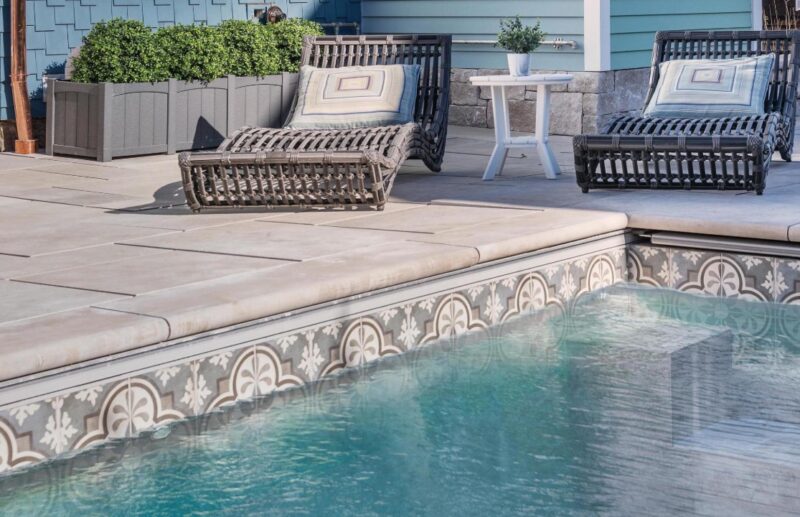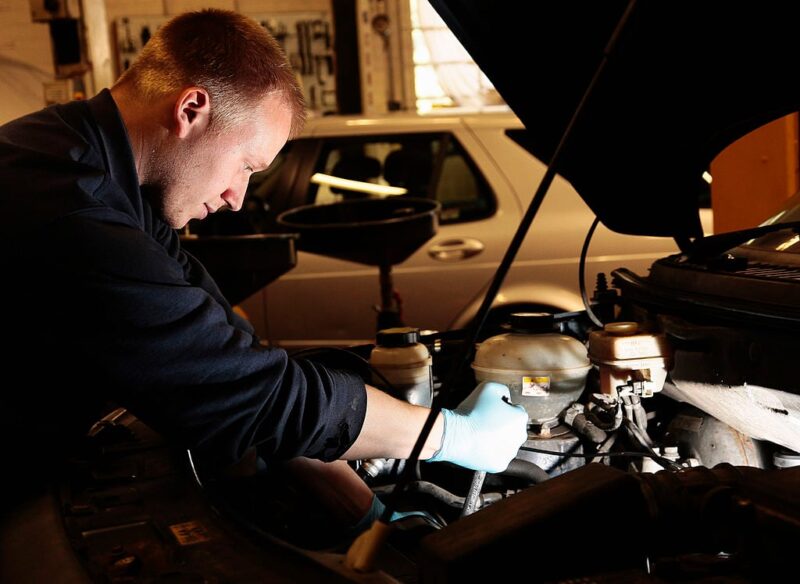A well-maintained swimming pool is more than just a backyard feature, it’s a place to unwind, entertain, and enjoy outdoor living. However, behind every beautiful pool lies important structural details that keep it safe, functional, and long-lasting. One of the most overlooked yet crucial components of your pool’s construction is the combination of the coping and the expansion joint.
When these two features begin to fail, the effects can ripple throughout your pool’s entire structure, leading to cracking, water leakage, and even foundation damage. Understanding how coping and expansion joints work together, and why timely repair is essential, can help you avoid expensive problems and extend the life of your pool.
What Exactly Is Pool Coping?
Pool coping refers to the cap or edging that runs along the perimeter of the pool. It acts as the transition between the pool structure and the surrounding deck. Beyond its visual appeal, coping has several vital functions. It helps direct water away from the pool shell, protects the structure from water damage, and creates a safe, smooth edge for swimmers to hold or walk along.
Coping materials vary depending on style and budget. Popular options include poured concrete, precast concrete, natural stone, pavers, and even brick. Over time, though, even the most durable materials begin to deteriorate. Exposure to pool chemicals, sunlight, and temperature fluctuations can cause coping to crack, shift, or loosen. Once this happens, small gaps can develop where water seeps through, a warning sign that repair or replacement may soon be needed.
The Purpose of an Expansion Joint
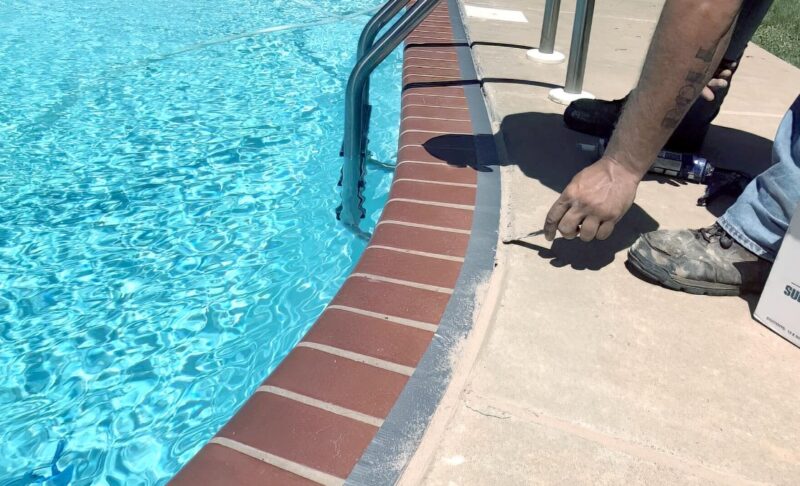
The expansion joint is a narrow space between the pool coping and the deck that allows both structures to move independently. Though it might look insignificant, it’s actually one of the most important features of your pool’s construction.
As outdoor temperatures rise and fall, concrete and stone naturally expand and contract. The pool shell and the deck are two separate concrete masses, and without an expansion joint, they would push against one another, eventually causing cracks in the coping, tile, or even the pool wall.
The expansion joint is filled with a flexible, waterproof sealant that absorbs movement, preventing stress and damage. It acts like a cushion or “buffer zone” that allows the pool and deck to shift slightly without harming each other. When properly installed and maintained, it keeps your pool stable and watertight.
Why Pool Coping Repair and Expansion Joint Maintenance Are Essential
Many homeowners overlook the connection between pool coping and the expansion joint, assuming they can handle one without worrying about the other. However, both are part of the same system that protects your pool from long-term damage. When one fails, the other is often compromised as well.
Here’s why keeping them in good condition is so important:
1. Prevents Structural Stress and Cracks
Without a flexible joint separating the pool shell and deck, normal expansion and contraction can lead to significant stress on both surfaces. Over time, this pressure can crack the coping, loosen tiles, and even cause sections of the pool wall to shift. A properly maintained expansion joint absorbs this stress, keeping the pool structure intact and preventing major damage.
2. Stops Water Leaks and Erosion
When coping cracks or loosens, water can easily seep behind the pool wall. During colder months, this trapped water can freeze and expand, widening cracks and eroding the foundation. A sealed and flexible joint prevents this type of water intrusion, helping maintain the integrity of both the pool and the surrounding deck.
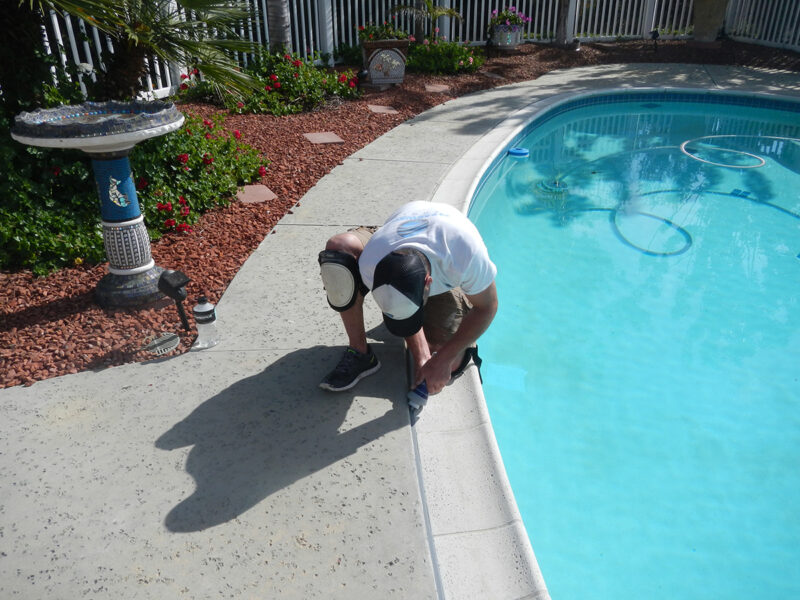
3. Protects Tile and Decking
Cracks along the pool’s perimeter don’t just affect the coping, they can cause damage to the surrounding tile and deck as well. When the coping shifts or the expansion joint deteriorates, movement between the pool and deck increases, leading to tile popping, chipping, or loosening. Maintaining these components prevents unnecessary damage to decorative elements and keeps your pool looking polished.
4. Improves Safety
Loose or broken coping stones create tripping hazards, especially for children and guests. Repairing coping ensures a stable, level edge around your pool, improving safety for everyone using it.
5. Preserves Aesthetic Appeal
Your pool’s appearance is one of the main reasons you invested in it. Cracked coping or a deteriorating joint line can detract from that beauty. Timely repair maintains the clean, finished look of your pool while also protecting its value.
How to Tell When Pool Coping or Expansion Joints Need Repair
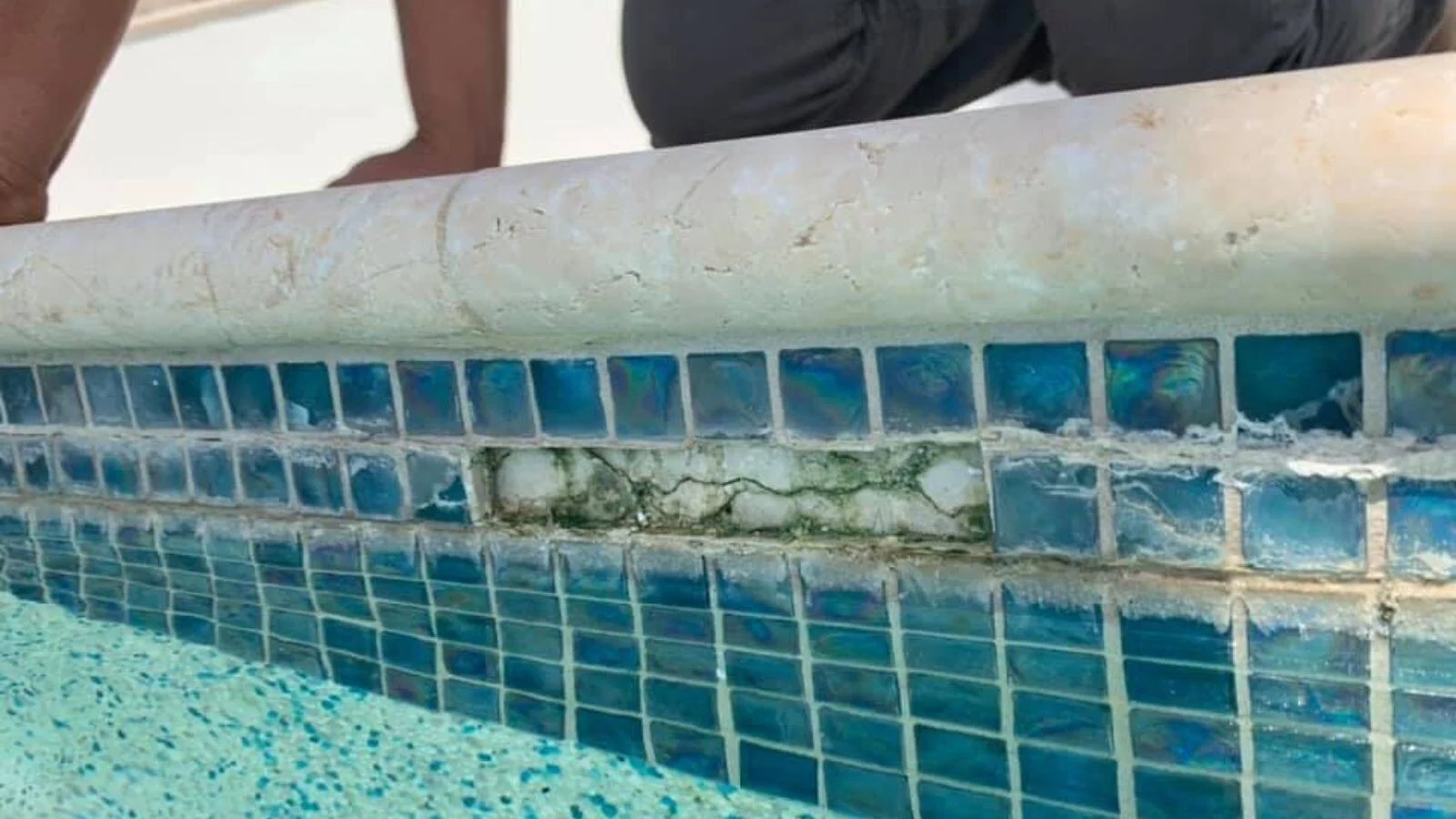
Even with proper maintenance, coping and joints wear down over time. It’s essential to spot the warning signs early before damage spreads. Look out for:
- Visible cracks in coping or between tiles
- Gaps between the pool coping and the deck
- Hardened, brittle, or crumbling joint material
- Water seeping behind tiles or under the deck
- Tiles are becoming loose or uneven
- Areas where the coping has shifted or sunk
If any of these issues appear, it’s time for a professional inspection and repair. Ignoring small cracks or gaps can lead to more extensive and expensive problems down the line.
The Pool Coping Repair and Expansion Joint Process
Repairing or replacing coping and expansion joints involves several important steps to restore both function and appearance. While the process varies depending on materials and damage severity, most repairs include the following stages:
- Inspection and assessment – A pool professional examines the coping and joint to identify structural issues, cracks, and water damage.
- Removal of damaged material – Loose or cracked coping pieces are carefully removed, along with any deteriorated sealant or mortar.
- Surface preparation – The area is cleaned and prepped to ensure new materials adhere properly.
- Joint replacement – The old expansion joint material is replaced with a flexible, water-resistant sealant designed to handle temperature changes and pool movement.
- Coping installation – New coping stones or repaired pieces are installed, leveled, and securely bonded to the pool edge.
- Finishing and sealing – The coping is sealed to protect against water and chemical exposure, giving it a clean, finished appearance.
Once completed, your pool’s edge not only looks refreshed but also regains its structural protection.
Maintenance Tips for Long-Lasting Coping and Joints
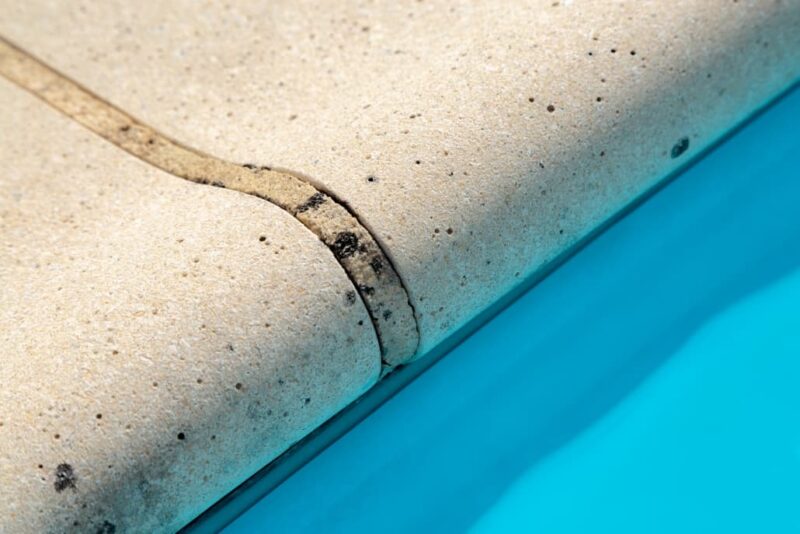
Keeping your pool coping and expansion joints in top shape doesn’t require constant attention, but regular upkeep can make a big difference. Here are a few best practices to extend their lifespan:
- Inspect annually ─ Check for cracks or gaps at the start and end of each swimming season.
- Clean regularly ─ Remove debris, dirt, and leaves from the coping and joint area to prevent staining or deterioration.
- Reapply sealant as needed ─ Over time, joint sealants lose elasticity. Replace or refresh them every few years to maintain flexibility and waterproofing.
- Avoid harsh chemicals ─ Strong cleaners can erode sealant and coping materials. Use mild pool-safe solutions instead.
- Address minor damage promptly ─ Small cracks or gaps are easier and cheaper to fix than large-scale repairs.
Routine maintenance prevents small issues from turning into costly structural problems.
Professional Repair Services You Can Rely On
Pool coping and expansion joint repair require precision, experience, and the right materials. Attempting DIY fixes may offer temporary relief but often fail to address underlying issues. A professional pool technician understands how to properly restore these components to ensure your pool’s structure remains sound and watertight.
NJ Waterscapes provides expert pool coping repair services with expansion joint across New Jersey. Their skilled team uses high-quality materials and proven techniques to protect your pool from damage, improve its appearance, and ensure lasting performance.
Final Thoughts
Your pool’s coping and expansion joint may not be the most glamorous parts of its design, but they play a critical role in its durability and safety. Neglecting these areas can lead to serious structural damage, leaks, and expensive repairs.
By scheduling regular inspections, addressing minor damage promptly, and ensuring your coping and expansion joint are properly maintained, you can safeguard your pool investment for years to come. A little attention now can prevent major problems later, keeping your pool safe, beautiful, and ready for every summer season.

